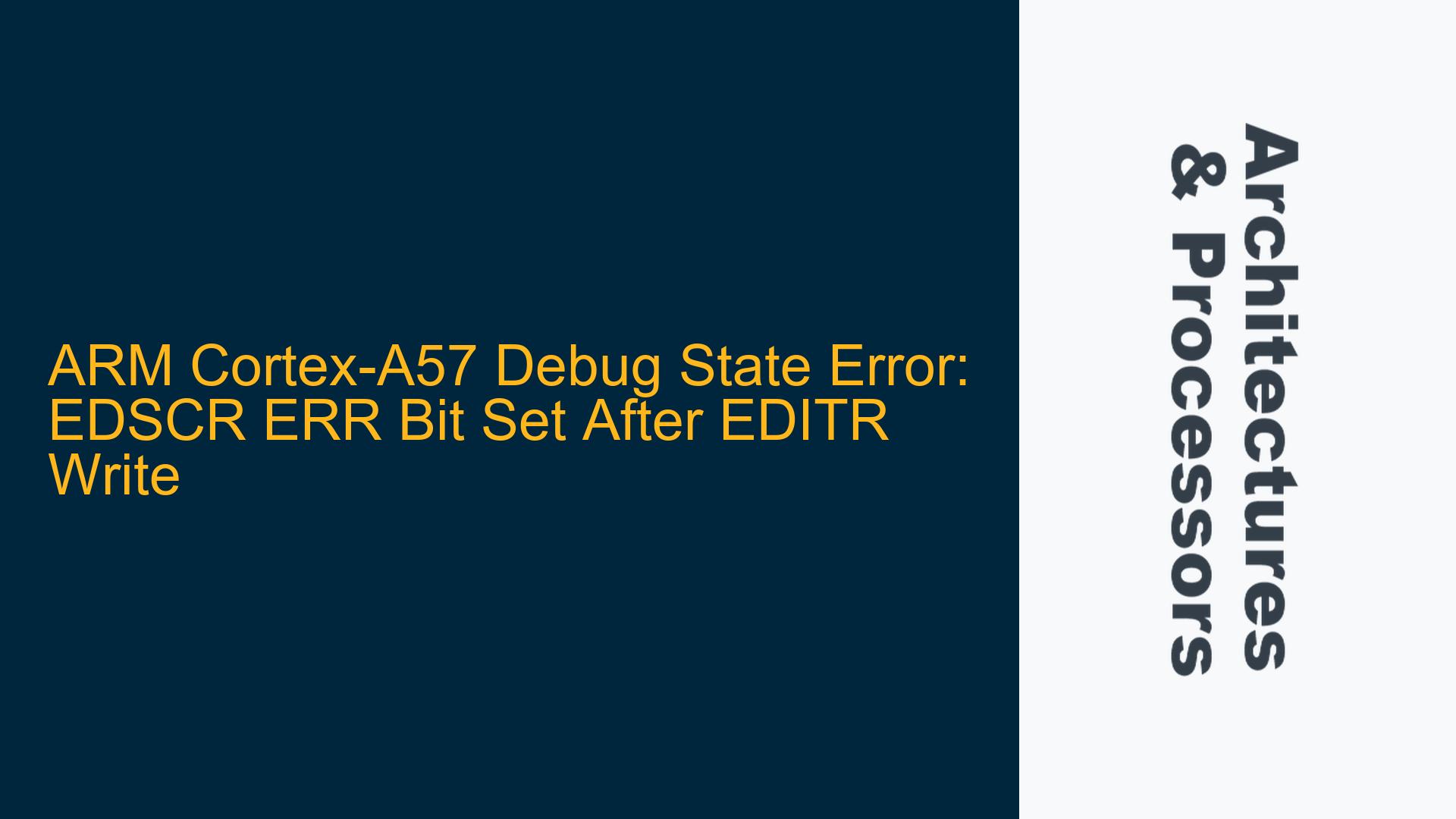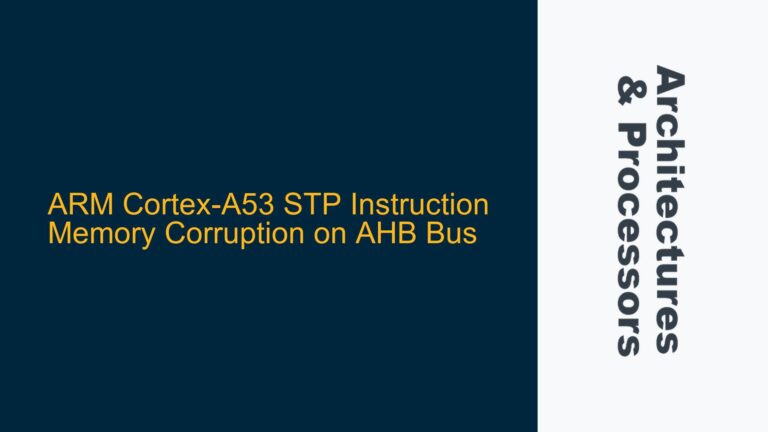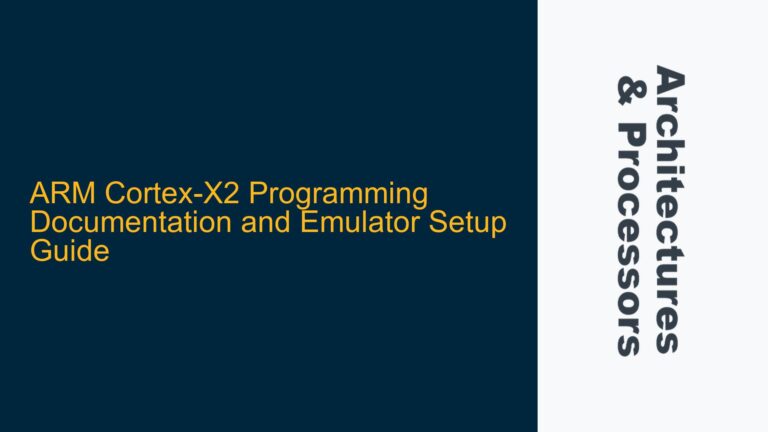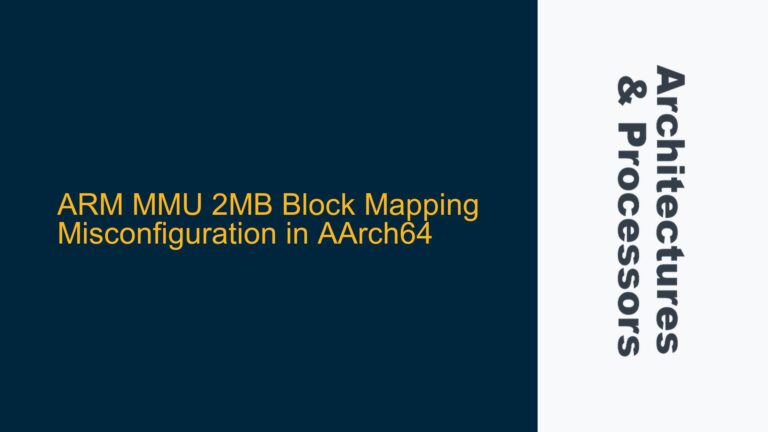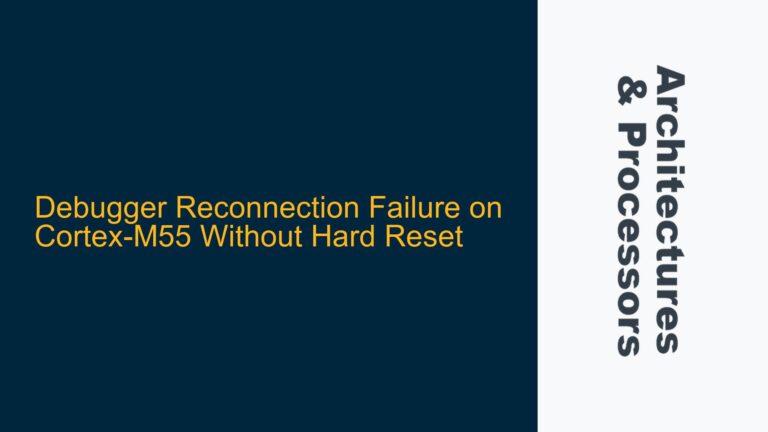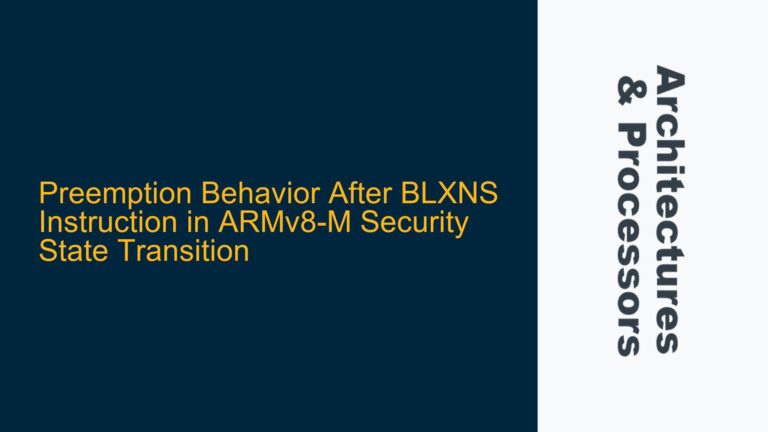ARM Cortex-A57 Debug State and EDITR Write Error Overview
The issue at hand involves the ARM Cortex-A57 processor entering debug state and encountering an error after a write operation to the EDITR (External Debug Instruction Transfer Register). Specifically, the EDSCR (External Debug Status and Control Register) ERR bit is set following the write operation, indicating that the processor has encountered an error during the debug state. The processor is operating in AArch64 mode, and the error occurs regardless of whether a NOP (No Operation) instruction or a MOV (Move) instruction is written to the EDITR. The EDSCR register values before and after the halt state, as well as after the write to EDITR, are provided, showing that the HDE (Halting Debug Enable) bit is set, and the processor is in EL1 (Exception Level 1).
The EDSCR register is a critical component in the ARM debug architecture, providing status and control information for the debug state. The ERR bit in the EDSCR is set when an error occurs during debug operations, such as an invalid instruction being written to the EDITR or an issue with the debug state itself. In this case, the ERR bit is set after a write to the EDITR, suggesting that the processor is unable to execute the instruction provided, even though the instructions being written (NOP and MOV) are valid in AArch64 mode.
The problem is further complicated by the observation that the processor state changes from AArch64 to AArch32 before the write to the EDITR, as indicated by the state check function armv8_dpm_get_core_state. This state change implies that the processor is no longer in AArch64 mode when the instruction is written to the EDITR, which could explain why the ERR bit is set. However, even when a valid Thumb mode (T32) instruction is written to the EDITR, the ERR bit is still set, indicating that the issue is not solely related to the instruction set being used.
Debug Authentication and Processor State Mismanagement
The root cause of the issue appears to be related to debug authentication and the management of the processor state during debug operations. Debug authentication is a security feature in ARM processors that controls access to debug functionality based on the processor’s current state and the configuration of debug authentication signals. These signals, such as DBGEN (Debug Enable), SPNIDEN (Secure Privileged Non-Invasive Debug Enable), and SPIDEN (Secure Privileged Invasive Debug Enable), determine whether debug operations are allowed in the current security state.
In this case, the DBGAUTHSTATUS_EL1 register reads 0x000000FF, indicating that all debug authentication signals are enabled, and debug operations should be permitted. However, the fact that the ERR bit is still set after a write to the EDITR suggests that there may be an issue with the debug state itself or with the configuration of the debug registers. Specifically, the processor may not be properly transitioning into the debug state, or the debug state may not be correctly configured to allow the execution of instructions written to the EDITR.
Another potential cause is the omission of necessary initialization steps for the debug registers. The discussion mentions that the initialization process is missing some lines relevant for resuming the Program Counter (PC), which are present in the OpenOCD example code. This omission could lead to an improperly configured debug state, causing the ERR bit to be set when attempting to execute instructions in the EDITR. Additionally, the CTI (Cross Trigger Interface) unlock operation, which is performed to enable debug functionality, does not resolve the issue, further suggesting that the problem lies elsewhere in the debug state configuration.
Implementing Debug State Initialization and Instruction Validation
To resolve the issue, a thorough review and implementation of the debug state initialization process is required. This includes ensuring that all necessary debug registers are properly configured and that the processor is correctly transitioned into the debug state. The following steps outline the troubleshooting and resolution process:
-
Verify Debug Authentication Signals: Ensure that all debug authentication signals, including DBGEN, SPNIDEN, and SPIDEN, are correctly configured and enabled. This can be done by reading the DBGAUTHSTATUS_EL1 register and verifying that all relevant bits are set. If any of these signals are not enabled, debug operations will not be permitted, and the ERR bit may be set.
-
Check Processor State Before EDITR Write: Before writing to the EDITR, verify the processor state using a state check function such as
armv8_dpm_get_core_state. This function should be called immediately before the write operation to ensure that the processor is in the expected state (AArch64 or AArch32). If the processor state has changed unexpectedly, additional investigation is required to determine the cause of the state change. -
Ensure Proper Debug State Initialization: Review the initialization process for the debug registers and ensure that all necessary steps are included. This includes setting up the EDSCR, EDITR, and other relevant debug registers, as well as performing any required unlock operations (e.g., CTI unlock). The initialization process should be based on the OpenOCD example code, which provides a reference implementation for configuring the debug state.
-
Validate Instructions Written to EDITR: Ensure that the instructions being written to the EDITR are valid for the current processor state. In AArch64 mode, valid instructions include NOP and MOV, while in AArch32 mode, valid instructions include Thumb mode (T32) instructions. If the processor state changes unexpectedly, the instructions written to the EDITR must be adjusted accordingly.
-
Monitor EDSCR Register for Errors: After writing to the EDITR, monitor the EDSCR register for any changes in the ERR bit. If the ERR bit is set, review the debug state configuration and the instructions written to the EDITR to identify the cause of the error. This may involve stepping through the debug state initialization process and verifying each step to ensure that the debug state is correctly configured.
-
Debug State Transition and Execution: Ensure that the processor is correctly transitioning into the debug state and that the instructions written to the EDITR are being executed as expected. This may involve single-stepping through the debug state and monitoring the processor’s behavior to identify any issues with the debug state transition or instruction execution.
By following these steps, the issue with the EDSCR ERR bit being set after a write to the EDITR can be systematically diagnosed and resolved. The key is to ensure that the debug state is properly configured and that the processor is in the expected state before writing to the EDITR. Additionally, validating the instructions written to the EDITR and monitoring the EDSCR register for errors will help identify any issues with the debug state or instruction execution.
Detailed Debug State Initialization Process
To provide a more detailed understanding of the debug state initialization process, the following table outlines the key steps and corresponding actions required to properly configure the debug state:
| Step | Action | Description |
|---|---|---|
| 1 | Verify Debug Authentication Signals | Read the DBGAUTHSTATUS_EL1 register to ensure that all debug authentication signals (DBGEN, SPNIDEN, SPIDEN) are enabled. |
| 2 | Check Processor State | Use the armv8_dpm_get_core_state function to verify the processor state (AArch64 or AArch32) before writing to the EDITR. |
| 3 | Initialize Debug Registers | Configure the EDSCR, EDITR, and other relevant debug registers based on the OpenOCD example code. |
| 4 | Perform CTI Unlock | Execute the CTI unlock operation to enable debug functionality. |
| 5 | Write Valid Instructions to EDITR | Ensure that the instructions written to the EDITR are valid for the current processor state (AArch64 or AArch32). |
| 6 | Monitor EDSCR for Errors | After writing to the EDITR, monitor the EDSCR register for any changes in the ERR bit. |
| 7 | Debug State Transition | Ensure that the processor correctly transitions into the debug state and executes the instructions written to the EDITR. |
By following this detailed initialization process, the debug state can be properly configured, and the issue with the EDSCR ERR bit being set after a write to the EDITR can be resolved. This process ensures that all necessary steps are taken to enable debug functionality and that the processor is in the correct state for executing debug instructions.
